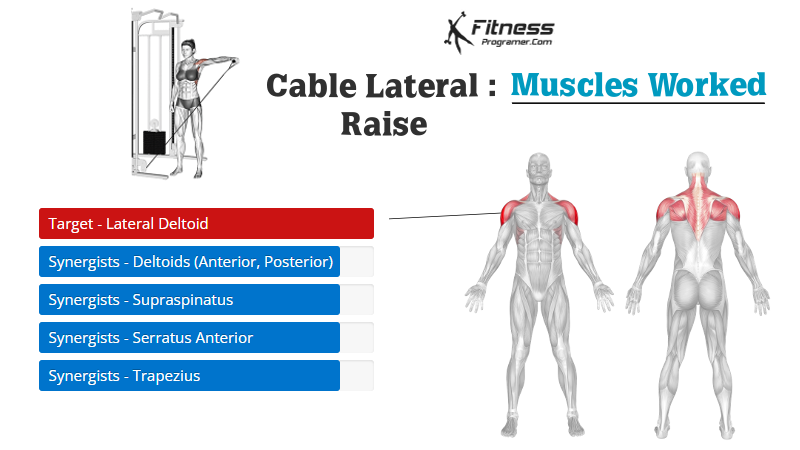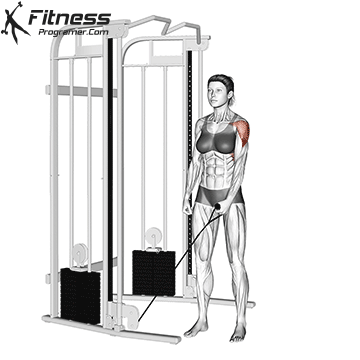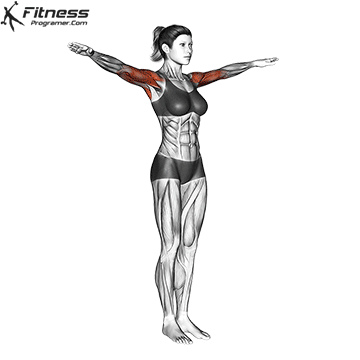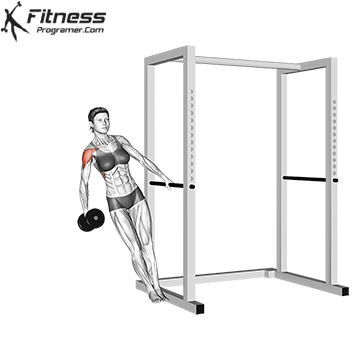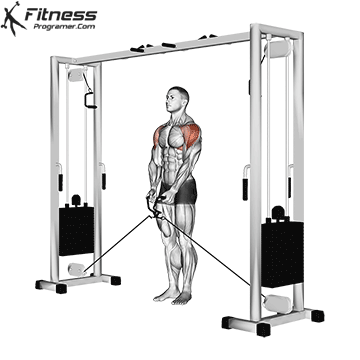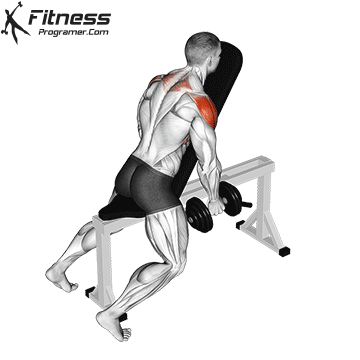Overview
The cable lateral raise involves raising your arm out to the side using a low cable pulley and handle attachment. This motion mimics a traditional dumbbell lateral raise but offers more constant resistance from start to finish. By isolating the lateral deltoid, it enhances shoulder aesthetics and contributes to balanced upper-body strength.
How to Perform the Cable Lateral Raise
- To begin: Stand next to a cable machine with the pulley set to the lowest setting. Grab the opposite-side handle with the hand farthest from the pulley, keeping your palm facing in.
- Set your posture: Keep your core engaged, chest lifted, and shoulders relaxed. Maintain a slight bend in the elbow throughout the lift.
- Raise the weight: Lift your arm out to the side until your elbow reaches shoulder height, keeping your wrist aligned with your elbow.
- Pause and lower: Briefly pause at the top, then slowly lower the handle back to your side with control. Repeat for the desired reps.
Tips for Proper Form
Keep your traps relaxed and avoid shrugging your shoulders as you lift.
Lead the movement with your elbow, not your hand, to engage the lateral delt.
Use a lighter weight with controlled tempo to prevent momentum.
Common Mistakes
Using excessive weight, leading to swinging or poor form.
Bending the elbow too much and turning the raise into a front lift.
Shrugging the shoulders and engaging the upper traps instead of isolating the delts.
Benefits of the Cable Lateral Raise
Targets the lateral deltoid specifically: Helps create broader shoulders and a wider upper-body frame.
Provides constant tension: Unlike dumbbells, the cable doesn’t lose resistance at the top of the movement.
Reduces joint stress: Smooth resistance curve minimizes strain on the shoulder joint and connective tissues.
Improves shoulder symmetry: Can correct imbalances by training one side at a time.
Useful for bodybuilders and athletes: A staple in hypertrophy programs and shoulder prehab work.
How to Incorporate Into Your Routine
The cable lateral raise fits well in shoulder hypertrophy days, push-focused upper body sessions, or as an activation movement.
- For Beginners: Start with 2–3 sets of 12–15 reps using light resistance to master form and muscle connection.
- For Hypertrophy: Perform 3–4 sets of 10–15 reps with moderate weight, focusing on constant tension and full range.
- For Strength: Not ideal as a primary strength builder; use after compound presses for 3–4 sets of 8–10 reps.
- For Functional Training: Pair with push-up plus or stability work to support scapular health and shoulder endurance.
- For Circuit Training: Use in push-day or delt circuits at 12–15 reps with short rest to boost metabolic stress.
- For General Fitness: Add 2–3 sets near the end of upper-body days to support shoulder tone and control.
Cable Lateral Raise: Muscles Worked

Variations of Cable Lateral Raise
Frequently Asked Questions
Can I do this exercise with both arms at once?
Yes, using dual cables allows simultaneous arm work, but may reduce focus on each side’s form.
Is this better than the dumbbell lateral raise?
Not necessarily better, but cable raises provide more consistent tension and a smoother resistance curve.
Should I train this to failure?
For hypertrophy goals, occasional sets to near failure are fine, but form must remain strict.
Where should I feel this working?
Primarily in the side of your shoulder—if you feel it in your traps, reduce weight and check your form.
How often should I train lateral raises?
You can include them 2–3 times per week, especially if your program targets shoulder growth or aesthetics.
